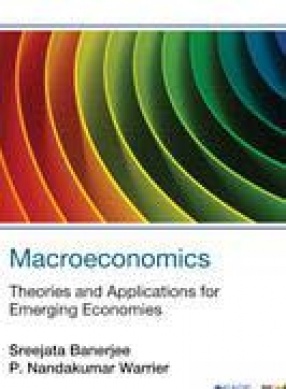This new textbook presents macroeconomic theory and its implications in policy formulation in a unique manner, continuously weaving in scenarios from India and other emerging economies. While the book meticulously guides the reader through the workings of key macroeconomic models, it also discusses at length the assumptions that make the models applicable to developing market nations. It offers interesting insights into the Simple Keynesian Cross Model, international capital movement and different schools of macroeconomic thought, and compares macroeconomic models of developed and developing economies.
Contents: Foreword. Preface. 1. Introduction to Macroeconomics. 2. National Income Accounts: The Toolbox for Macroeconomics. 3. The Basic Keynesian Demand Model and the Hidden Cross. 4. Economic Growth. 5. Introduction of the Financial Sector: Bonds and Interest Rates Money, Money Supply and the Banking System The Demand for Money The ISLM Model: The Demand Side of the Economy. 6. The ISLM Model: Fiscal Policy and Compatibility with the Keynesian Model. 7. The ISLM Model: Monetary Policy and Transmission to Goods Market. 8. Consumption and Investment Demand. 9. The Role of the Government and the Government Budget Balance. 10. The Supply Side: A Complete Macroeconomic Model of the Economy. 11. The Budget: Links to Unemployment, Inflation and the Debt Burden. 12. The Open Economy. 13. Capital Mobility. 14. Determination of Exchange Rates in an Open Economy. 15. Business Cycle Theory. 16. The Labour Market as the Kingpin: The Various Schools of Macroeconomic Thought. 17. Disaggregated Multi-sector Models for Industrial Nations and Developing Countries. Index.




There are no reviews yet.